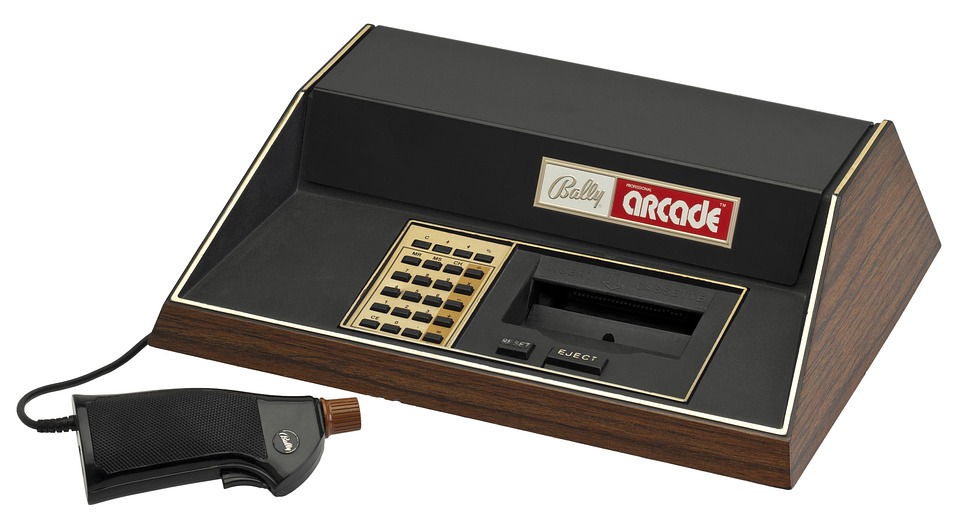The world of arcade games has long been a tapestry woven with innovation, creativity, and nostalgia. As we dive into the pixelated universe of Joystick Legends, we unearth the stories behind some of the most influential arcade game developers whose work not only defined an era but also laid the foundation for future gaming trends.
The Golden Age of Arcade Games
The late 1970s and early 1980s are often referred to as the "Golden Age of Arcade Games." During this time, machines such as Pong, Space Invaders, and Pac-Man captivated audiences and revolutionized entertainment. But behind these iconic titles were brilliant minds who designed, programmed, and pushed the boundaries of what arcade gaming could be.
Interview with Nolan Bushnell: The Godfather of Video Games
Nolan Bushnell, the co-founder of Atari and the creator of Pong, is often heralded as the father of the video game industry. His vision transformed the way people interacted with technology and entertainment.
Q: What ignited your passion for creating arcade games?
Bushnell: "It all started with a simple love for technology and play. I wanted to capture the joy of gaming in a social setting where players could share experiences. The arcade was that perfect environment."
Q: How did you overcome the technical limitations of your time?
Bushnell: "We had to work with very limited resources, which forced us to be incredibly creative. We focused on gameplay over graphics, ensuring that the experience was fun and engaging."
Interview with Toru Iwatani: The Mind Behind Pac-Man
Toru Iwatani, the creator of Pac-Man, crafted a game that transcended barriers and became a cultural phenomenon.
Q: What was the inspiration behind Pac-Man?
Iwatani: "I wanted to create a game that was appealing to everyone, especially women. Most games at the time were centered around violence or space themes. I thought, why not create a character that was cute and lovable?"
Q: How did you approach game design differently from others?
Iwatani: "I believed in the importance of making a game that was easy to understand but difficult to master. I wanted players to feel a sense of accomplishment with each level they completed."
Interview with Eugene Jarvis: The Creator of Defender
Eugene Jarvis, known for his work on Defender, pushed the envelope with fast-paced gameplay and complex mechanics.
Q: What was your goal when developing Defender?
Jarvis: "I aimed to create a game that was not only challenging but also gave players a sense of urgency. It was about keeping players on the edge of their seats and pushing their skills to the limit."
Q: How important was player feedback in your design process?
Jarvis: "Extremely important. We would often watch players interact with the game, learning from their reactions and frustrations to make adjustments that enhanced the gameplay experience."
The Evolution of Arcade Games
With the advent of technology, the landscape of arcade gaming has evolved dramatically. From 8-bit graphics to 3D environments, development tools have become more sophisticated, paving the way for new genres and experiences.
Insights from the New Era of Developers
While the pioneers of the arcade game industry set the stage, a new wave of developers is currently shaping the future. We caught up with some of them to discuss their views on the current state of arcade gaming.
Interview with Adam Hines: Indie Developer
Q: What challenges do indie developers face today?
Hines: "One of the biggest challenges is standing out in a crowded market. With so many games available, it’s crucial to find a unique concept that resonates with players."
Q: How do you view the legacy of classic arcade games?
Hines: "They laid the groundwork for everything we do today. Classic games taught us about rhythm, timing, and player engagement—I draw inspiration from them constantly."
The Future of Arcade Gaming
As technology continues to advance, the future of arcade gaming promises to be exciting. Virtual reality, augmented reality, and cloud gaming are ushering in new possibilities, attracting a diverse audience and revitalizing many elements of the arcade experience.
The Role of Community
Today’s developers emphasize the importance of community engagement. While the arcade scene once thrived in physical locations, social media and online platforms now offer a new realm for player interaction, fostering friendships and competition worldwide.
Conclusion
The legacy of arcade game developers is a testament to innovation, creativity, and the communal aspect of gaming. Each interview sheds light on the passion and dedication it takes to create games that resonate with players, both past and present. As we move forward, the spirit of these joystick legends will undoubtedly inspire future generations to pursue their dreams in the exciting realm of gaming.
In the words of Nolan Bushnell, "The future of gaming should be about new experiences that connect people and challenge their imaginations." The joystick may have evolved, but the heart of arcade gaming will always beat for creativity and fun.



